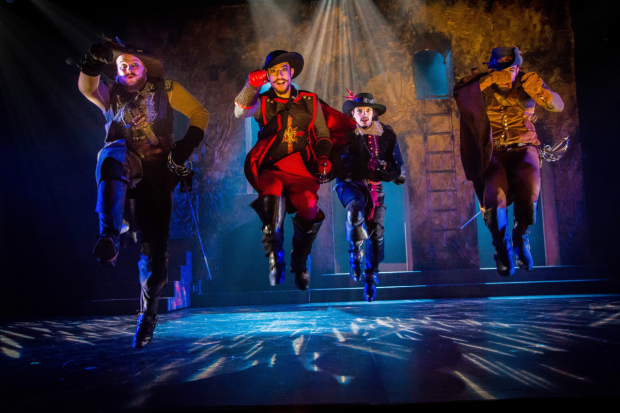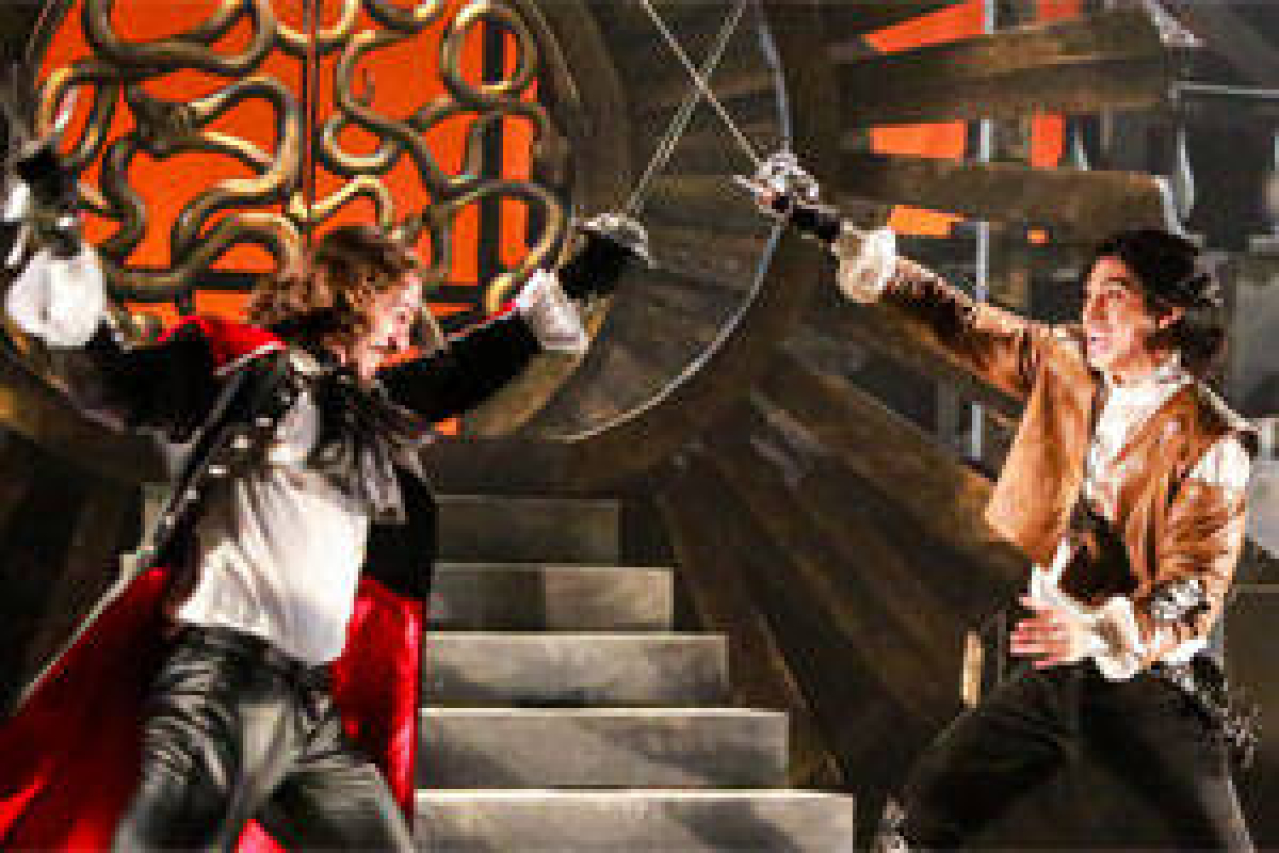The Man in the Iron Mask

(© Johnny Shryock)
As a follow-up to its 2013 production of The Three Musketeers, Synetic Theater is mounting a new show based on another work of Alexander Dumas: The Man in the Iron Mask. Many writers have explored the story of this man, locked away in the Bastille. In Dumas' version, that man is Phillippe, the identical twin of King Louis XIV, who has been forced to wear an iron mask to hide his identity. He is as good as his brother is cruel.
Dumas' is the version that Synetic's Ben and Peter Cunis use as the basis of their play, which, unlike many Synetic productions, has a text. They reintroduce D'Artagnan, the fourth Musketeer, who at the start of the play is in the employ of the king. D'Artagnan has no idea that his fellow Musketeers (Athos, Porthos, and Aramis) are planning to return to court, capture the evil king, and install Phillippe in his place.
The play begins with a flashback, as two members of the younger generation reminisce about how brave and noble the Four Musketeers were. Soon they are interrupted by Aramis, who has in the intervening years become a priest. He narrates the recent history of the remaining Musketeers: Porthos is lazy and unproductive; Athos is an aging farmer; D'Artagnan has been crippled by loss.
Ben Cunis is quietly dignified as Athos, arriving at court more to save his son from marriage than to join the other Musketeers. Nicklas Aliff is a towering figure, whose earthy Porthos is a key element in re-creating the four Musketeers. Ryan Sellers portrays Aramis as a cunning organizer who will do whatever it takes to regain the Musketeers' former glory. Shu-Nan Chu makes a marvelous D'Artagnan, completely rehabilitated and seemingly ready to fly through the air to meet his opponents in a sword fight.
Alex Mills is brilliant in the dual roles of King Louis and Phillippe. He exaggerates the absurd foppishness of the king, reveling in his absolute power as he struts around, flourishing a lace handkerchief and sporting long black curls that cascade past his shoulders. Mills' waifish Phillippe is particularly effective in a scene where he has been liberated from his cell and the Musketeers try to teach him basic etiquette, so they can introduce him to court.
The king's financial adviser, Colbert, is played for laughs by Nathan Weinberger, whose massive gray wig (styled by Ali Pohanka) is topped with what looks like two small bee hives. It's impossible to take
him seriously. As a counselor to the king, Zana Gankhuyag shows off his dynamic dancing skills. Peter Pereyra shines as Diego, an admirer of the original Musketeers who adds a bit of improbable whimsy to one entrance by whistling the first notes of "La Marseillaise."
Director Paata Tsikurishvili keeps the play moving quickly, so there is never a lull in the action. Irina Tsikurishvili's choreography is brilliant. The most spectacular dance is a courtly engagement celebration, danced to Johann Pachelbel's Canon in D. The fight choreography, by Ben Cunis and Vato Tsikurishvili, provides endless opportunities for thrilling sword and pistol fights.
Daniel Pinha's set consists of a great wall on a turntable. One side of the wall is textured, as if vines are growing on it. It serves all the outdoors scenes. The other side, painted ochre and red, is for indoor scenes. Costume designer Erik Teague plays off this primary palette of black and red, with plenty of gold details, especially for royalty.
One of the most appealing aspects of the production is its use of period music. In addition to the Baroque selections, Konstantine Lortkipanidze creates a vibrant original score using everything from Christian chant and brass bells to plucked guitar.
Toward the end of Man in the Iron Mask, the story grows murky, but the production itself keeps its momentum until the end, as the older but wiser Musketeers charge off into the sunset on their trusty steeds.











